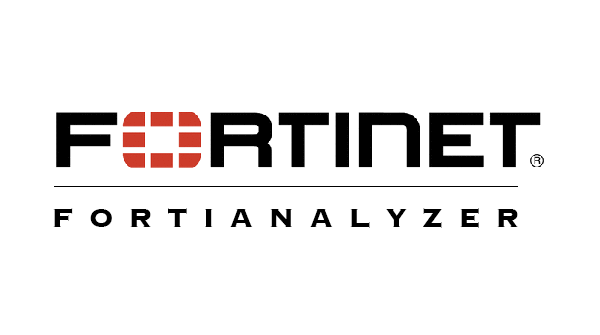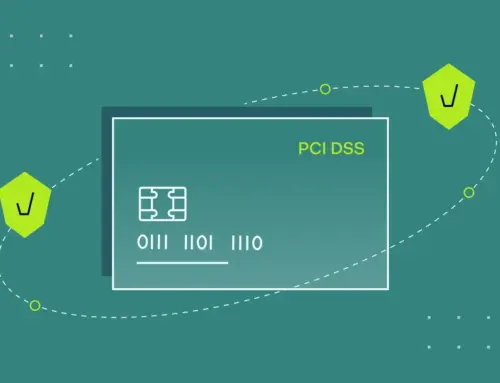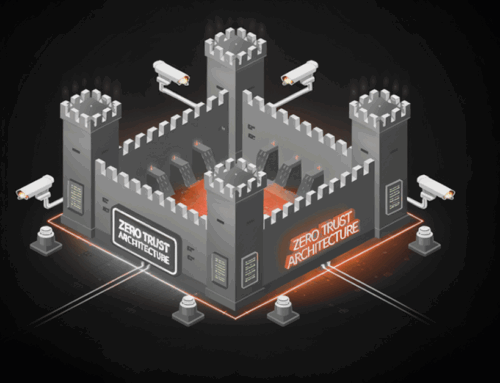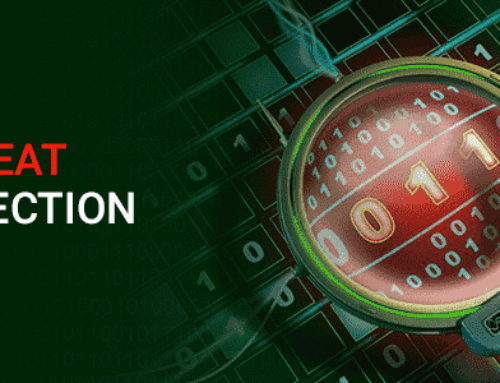
Automating Incident Response with FortiSOAR and FortiAnalyzer
Fortinet: Automation SOC Detection with FortiAnalyzer and FortiSOAR Playbooks Automate Security Team.
In today’s rapidly evolving digital landscape, ensuring the security of your enterprise is more critical than ever, and a robust security rating is essential for effective risk management via FortiAnalyzer. Fortinet stands at the forefront, offering robust solutions to safeguard your infrastructure. Through the integration of FortiAnalyzer and FortiSOAR playbooks provide a powerful security orchestration framework to streamline incident response and enhance overall security management., Fortinet provides a comprehensive approach to SOC automation. This combination not only enhances threat detection but also streamlines security operations, enabling security teams to manage threats efficiently and effectively. By leveraging these advanced tools, organizations can anticipate, mitigate, and respond to cyber threats with unparalleled precision, enhancing their overall threat response capabilities.
Understanding SOC Automation
What is a Security Operations Center (SOC)?
A Security Operations Center, or SOC, is a centralized unit that deals with security issues on an organizational and technical level, ensuring a comprehensive approach to managing security events. It is the heart of an organization’s cybersecurity strategy, tasked with monitoring, detecting, and responding to security threats. Equipped with an array of security tools, a SOC is designed to provide comprehensive threat intelligence and incident response capabilities. It ensures that the security posture of an organization is continuously fortified against potential cyber threats, safeguarding business operations and maintaining the integrity of digital assets.
Importance of SOC Automation in Cybersecurity
SOC automation is crucial in enhancing the efficiency and effectiveness of cybersecurity measures. Automation enables security teams to manage vast amounts of data quickly and accurately, reducing the time to detect and respond to threats. By automating routine tasks and incident response, organizations can focus on more complex threat hunting and threat investigation activities. This not only improves the overall security posture but also allows for a lean security approach where resources are optimally utilized via FortiAnalyzer. Automation also empowers security operations teams to act swiftly, minimizing the impact of security breaches.
Key Components of SOC Automation
The key components of SOC automation include advanced threat detection, security orchestration, and the use of playbooks to automate incident response.
| Tools | Functions of a managed security platform designed to streamline security operations and improve overall threat detection. |
|---|---|
| FortiAnalyzer and FortiSOAR | Integrate seamlessly across the Fortinet Security Fabric, providing a single platform for security analytics and threat intelligence. |
| FortiGuard Labs and FortiGuard | Provide elite threat intelligence, enabling enhanced outbreak detection and security information management, which helps security teams respond more effectively to security events. |
By utilizing AI and automation, organizations can streamline security operations, ensuring a robust and resilient defense against ever-evolving cyber threats.
FortiAnalyzer: Enhancing Detection Capabilities
Overview of FortiAnalyzer Features
FortiAnalyzer is a pivotal component in Fortinet’s security arsenal, designed to strengthen detection capabilities and provide comprehensive security analytics. It offers an array of features that empower security teams to manage and interpret security logs efficiently. By leveraging Fortinet’s elite threat intelligence, FortiAnalyzer enables advanced threat detection and outbreak detection, ensuring a robust security posture. Its analytics capabilities allow for the consolidation and analysis of data from multiple security tools, enhancing the visibility across network and security infrastructures. This platform is designed not only to streamline security operations but also to automate key processes, thus enabling security teams to focus on smarter security operations. critical threat investigation and response tasks.
Integration with Fortinet Security Fabric
FortiAnalyzer seamlessly integrates across the Fortinet Security Fabric, offering a unified approach to threat intelligence and security orchestration. This integration ensures that every component of the security architecture works in harmony, providing a single platform for security analytics and incident response. By connecting with other security tools such as FortiSIEM and FortiGuard Labs, FortiAnalyzer enhances the capability of security operations teams to detect and respond to threats swiftly and effectively. This connectivity not only fortifies the security fabric but also simplifies the management of security information, ensuring that organizations can maintain a proactive defense against potential cyber threats.
Use Cases for FortiAnalyzer in SOC
Within a Security Operations Center (SOC), FortiAnalyzer proves indispensable in automating incident response and optimizing threat detection processes. Its ability to manage and analyze security logs allows security teams to anticipate potential threats and respond with precision. FortiAnalyzer’s integration with AI and automation technologies enables SOCs to perform advanced threat detection and threat hunting, thereby enhancing the overall security posture. Its use cases extend to real-time alert management, outbreak detection, and comprehensive threat intelligence analysis, making it a critical tool for ensuring the resilience of an organization’s cybersecurity infrastructure.
FortiSOAR Playbooks: Streamlining Security Operations
What are Playbooks in FortiSOAR?
Playbooks in FortiSOAR are automated workflows designed to streamline security operations and enhance incident response. They provide a structured approach to handling security alerts and incidents, enabling security teams to respond swiftly and efficiently. Each playbook is tailored to address specific security scenarios, leveraging Fortinet’s security intelligence to automate and orchestrate responses. By reducing the manual effort involved in incident management, these playbooks allow security operations teams to focus on more strategic tasks, thus improving the overall efficiency and effectiveness of the organization’s cybersecurity measures.
Creating Effective Playbooks for Incident Response
To create effective playbooks in FortiSOAR, it is essential to focus on clear, actionable steps that align with the organization’s security strategy. Playbooks should be developed with input from experienced security teams and incorporate automated processes that enhance threat detection and incident response. By integrating threat intelligence and analytics, these playbooks ensure that security operations are not only reactive but also proactive. The use of Fortinet’s advanced security tools and AI-driven security insights can significantly enhance the capability of playbooks, ensuring that they effectively mitigate cyber threats and maintain a fortified security posture.
Examples of Playbooks for Outbreak Detection
Examples of playbooks for outbreak detection in Forti SOAR include workflows designed to quickly identify and contain malware outbreaks. These playbooks leverage Fortinet’s threat intelligence and security analytics to automate the detection and response process, ensuring rapid containment of threats.
| Tools | Benefits |
|---|---|
| FortiGuard and other security products are essential for maintaining a strong defense against threats. | Orchestrate a coordinated defense and deploy security measures across the network to prevent the spread of infections |
| Automation | Enhances the speed and effectiveness of incident response and ensures robust defenses against cyber threats |
Impact of Automation on Security Operations
Benefits of Automating Security Operations
Automation in security operations offers transformative benefits, empowering organizations to efficiently manage and respond to an increasingly complex threat landscape. By automating routine tasks, security teams can focus their efforts on more strategic initiatives such as threat hunting and incident response. This approach enhances threat detection, minimizes response times, and reduces the risk of human error. Through the integration of tools like FortiAnalyzer and FortiSOAR, organizations can ensure their security posture remains robust, efficiently managing alerts and maintaining operational resilience.
Challenges in Implementing SOC Automation
Implementing SOC automation presents several challenges, including the integration of disparate security tools and the potential resistance to change within security teams, which can hinder effective threat response. Organizations must ensure that their security automation strategies align with their overall cybersecurity objectives, requiring careful planning and execution to seamlessly deploy FortiAnalyzer within their infrastructure. Additionally, the complexity of automating security processes demands a deep understanding of the existing security infrastructure and the potential impacts on threat detection and incident response. Overcoming these challenges is crucial for maintaining a fortified and responsive security posture.
Future Trends in SOC Automation and Security
Looking ahead, SOC automation is set to evolve with advancements in AI-driven security and threat intelligence. As cyber threats become more sophisticated, the integration of AI and machine learning in security operations will enhance threat detection and streamline incident response, ultimately helping security teams stay ahead of emerging threats. Organizations will increasingly rely on platforms like Fortinet Security Fabric for comprehensive security analytics and orchestration. The future will see a more proactive approach to cybersecurity, with security operations centers leveraging automation to anticipate and mitigate risks before they impact business operations.
Indicators of Compromise and Cyber Threat Detection
Defining Indicators of Compromise (IoCs)
Indicators of Compromise (IoCs) are critical components in the realm of cybersecurity, serving as evidence of potential security breaches or malicious activities Within a network, smarter security operations can be implemented to enhance overall security. These indicators include enhanced data security measures.
| Indicator Type | Description |
|---|---|
| Unusual Network Traffic | Evidence of potential security breaches can be enhanced through the convergence of networking and security measures in an organization’s strategy. |
| Unauthorized Access Attempts | Indicators of malicious activities |
| Presence of Malware Signatures | Evidence of malware in the network |
By effectively identifying and analyzing IoCs, organizations can enhance their threat detection capabilities, allowing security teams to respond swiftly to incidents through smarter security operations. emerging threats. Utilizing Fortinet’s advanced threat intelligence, organizations can accurately identify IoCs and bolster their security posture against evolving cyber threats, supported by the powerful security orchestration provided by FortiAnalyzer.
Utilizing FortiGuard for Threat Intelligence
FortiGuard plays a pivotal role in providing elite threat intelligence, offering organizations real-time insights into the global threat landscape. By leveraging FortiGuard’s comprehensive database of known threats, security operations teams can enhance their detection capabilities, quickly identifying potential risks and orchestrating appropriate responses. This intelligence is integrated across the Fortinet Security Fabric, enabling a coordinated defense strategy that fortifies the organization’s network and security infrastructure while providing related threat intelligence. The use of FortiGuard ensures that security teams are equipped with the latest information to combat cyber threats effectively.
Integrating IoCs into SOC Operations
The integration of Indicators of Compromise (IoCs) into SOC operations is essential for maintaining a proactive defense strategy. By incorporating IoCs into security workflows, organizations can automate the detection and response processes, ensuring swift action against potential threats. Tools like FortiAnalyzer and FortiSOAR enable seamless integration of IoCs, providing a single platform for threat investigation and response. This approach not only enhances the efficiency of security operations but also ensures that organizations remain vigilant and responsive to the ever-changing threat landscape with smarter security operations.
5 Surprising Facts About Automating Incident Response with FortiSOAR and FortiAnalyzer
- FortiSOAR integrates seamlessly with FortiAnalyzer, allowing security teams to automate incident response workflows and reduce response times significantly.
- With FortiSOAR, organizations can customize playbooks based on their unique security policies, making incident response more effective and tailored to specific threats.
- FortiAnalyzer provides advanced analytics and reporting capabilities that enhance the automation process, offering insights that help in refining incident response strategies.
- The combination of FortiSOAR and FortiAnalyzer can help organizations achieve compliance with various regulatory requirements through automated reporting and documentation.
- FortiSOAR’s ability to integrate with third-party tools and platforms expands its capabilities, enabling a more comprehensive approach to incident response automation.
What is FortiSOAR and how does it automate incident response?
FortiSOAR is a powerful security orchestration, automation, and response platform that helps organizations automate their incident response processes. By utilizing playbooks, FortiSOAR streamlines workflows and allows security teams to respond to threats more efficiently, ultimately enhancing improved security across their systems.
How does the FortiAnalyzer connector enhance security operations?
The FortiAnalyzer connector integrates seamlessly with other security fabric devices, providing a unified platform for managing security operations. This integration improves data visibility, enabling security teams to manage incidents more effectively while leveraging insights from the latest advancements in FortiAnalyzer.
What role do FortiGuard outbreak alerts play in incident response?
FortiGuard outbreak alerts provide timely notifications about emerging threats, allowing security teams to proactively respond to potential incidents. These alerts are crucial for maintaining a robust security posture and are integrated within the FortiSOAR platform for automated incident management.
How can FortiAnalyzer assist with detecting indicators of compromise?
FortiAnalyzer helps in identifying indicators of compromise by analyzing logs and network traffic for unusual patterns. This capability is essential for resource-constrained security and IT teams struggling to manage security operations, as it automates the detection process and reduces the workload on analysts.
What are the benefits of using playbooks in FortiSOAR?
Playbooks in FortiSOAR are designed to automate repetitive tasks, allowing security teams to focus on more complex issues. This automation not only improves response times but also enhances the overall effectiveness of security operations, making it easier to manage security incidents.
How does FortiAnalyzer leverage machine learning and AI technologies?
FortiAnalyzer leverages leading-edge machine learning and AI technologies to analyze vast amounts of data and identify potential security threats more accurately. This integration enhances the user experience by providing actionable insights that help security teams make informed decisions.
What advancements have been announced for FortiAnalyzer recently?
Recent announcements regarding FortiAnalyzer include significant enhancements aimed at improving the user experience and expanding its capabilities within the multi-tool security stack. These advancements enable better management of security operations and integration with FortiGuard labs threat intelligence.
How can organizations effectively manage their security operations with FortiSOAR?
Organizations can effectively manage their security operations with FortiSOAR by utilizing its automation features, which streamline workflows and enhance collaboration among security teams. By implementing FortiSOAR, teams can lean on automated processes to reduce the manual effort required in incident response.
What is the significance of SOC automation in security management?
SOC automation is crucial for modern security operations as it allows security operations centers to operate more efficiently. By automating routine tasks and incident responses, teams can focus on higher-level strategic initiatives, thus improving overall cybersecurity posture and response capabilities.





